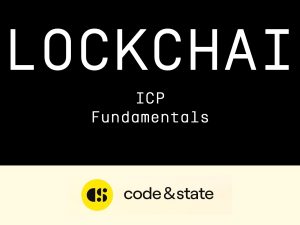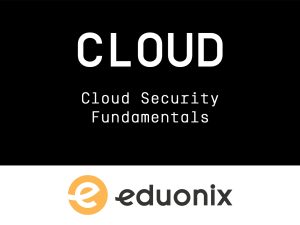Getting Started with ICP
- Description
- Curriculum
- Reviews
- Grade
Are you ready to dive into the future of Web3 and decentralized computing? The Getting Started with ICP (Internet Computer Protocol) course is designed for beginners, developers, and blockchain enthusiasts looking to explore how ICP enables a fully decentralized internet.
This course will introduce you to the core concepts of ICP, how it differs from traditional blockchains, and how you can start building smart contracts and decentralized applications (dApps) on the Internet Computer.
Learn how to interact with the ICP ecosystem, deploy your first Canister smart contract, and explore key components like the Network Nervous System (NNS), ICP token, and decentralized governance.
📌 Key Takeaways:
✅ Understand the basics of Internet Computer Protocol (ICP)
✅ Learn how ICP differs from other blockchain technologies
✅ Set up your ICP wallet and interact with the Network Nervous System (NNS)
✅ Deploy your first Canister smart contract
✅ Get hands-on experience with Motoko and Rust for smart contract development
Start your journey into Web3 development and the decentralized internet today!
-
1Building the Future10:00
Before diving into the next part of this course, let's understand why DAOs, the Internet Computer and Motoko represent a unique opportunity for you to shape the future and participate in building a new society.
-
2What is a Canister?10:00This lesson is locked because you haven't completed the previous one yet. Finish the previous lesson to unlock this one.
Developers write their application by writting code for their canisters. The canister is deployed on the Internet Computer and users can interact with canisters through the Internet.
-
3What is Motoko?10:00This lesson is locked because you haven't completed the previous one yet. Finish the previous lesson to unlock this one.
WebAssembly is extremly fast, efficient and secure. Unfortunately, WebAssembly is a low level language. Developers don't write code in WebAssembly - they use a higher level language that compiles to WebAssembly.
-
4What is a dApp?10:00This lesson is locked because you haven't completed the previous one yet. Finish the previous lesson to unlock this one.
Most applications and DAOs run somewhat decentralized with still some centralized components. The future looks more and more decentralized, but the path to decentralization is not an obvious one.
-
5What is a DAO?10:00This lesson is locked because you haven't completed the previous one yet. Finish the previous lesson to unlock this one.
Today, humanity's most pressing issue is our inability to organize ourselves and work collaboratively without corruption, inefficiency, or immense inequalities. The Internet Computer and DAOs are incredible tools that enable us to solve these issues.
-
6Set Up your Local Environment AssignmentAssignmentThis lesson is locked because you haven't completed the previous one yet. Finish the previous lesson to unlock this one.
-
7Introduction to DAOs23:08This lesson is locked because you haven't completed the previous one yet. Finish the previous lesson to unlock this one.
-
8DAO Membership32:56This lesson is locked because you haven't completed the previous one yet. Finish the previous lesson to unlock this one.
In this chapter we will make it possible for others to join our DAO. For that, we will implement CRUD (Create, Read, Update, Delete) functionalities inside our canister.
-
9DAO Monetisation12:35This lesson is locked because you haven't completed the previous one yet. Finish the previous lesson to unlock this one.
In this chapter we implement a token for our DAO. This is an essential step to make our project economically sustainable. A mistake commonly made when creating a DAO is to believe that having a token is enough to guarantee a solid business strategy and consistent income for the organization - this is not the case.
-
10DAO Voting30:50This lesson is locked because you haven't completed the previous one yet. Finish the previous lesson to unlock this one.
In this chapter we implement a voting system. A voting system enables the community to take important decisions together on the future of the DAO. Governance is a complex area and many different type of governance model could be implemented depending on the need of the organization.
-
11DAO Brand14:51This lesson is locked because you haven't completed the previous one yet. Finish the previous lesson to unlock this one.
In this chapter we will build a website and an identity for our DAO. This important step enables us to increase our visibility in the ecosystem and bring people that share the same vision together.
-
12DAO Graduation15:03This lesson is locked because you haven't completed the previous one yet. Finish the previous lesson to unlock this one.
In this final chapter, we will build our graduation project. The end goal is to build a webpage where the text displayed is entirely controlled by a DAO. This project showcases the possibility of building community-owned web applications. Think of the webpage as just a starting point to show what else could be run by a DAO – like an entire game, a social network, an app, or even an AI model.

3D Vision Agriculture AI Analytics Artificial Intelligence Authentication Automation Automotive Blockchain Computer Vision Cryptocurrency CV Cybersecurity Data Science Depth Perception Development Digital Identity Energy Sector Ethics FinTech Healthcare Image Processing Insurance IoT Machine Learning ML Motion Analysis Natural Language Processing Neural Networks NFT NLP NN Object Detection Object Recognition Python Real Estate Reinforcement Learning RL Smart Cities Smart Contracts Supply Chain Management Transparency Trust Voting Systems
Search
Working hours
| Monday | 9:30 am - 6.00 pm |
| Tuesday | 9:30 am - 6.00 pm |
| Wednesday | 9:30 am - 6.00 pm |
| Thursday | 9:30 am - 6.00 pm |
| Friday | 9:30 am - 5.00 pm |
| Saturday | Closed |
| Sunday | Closed |




